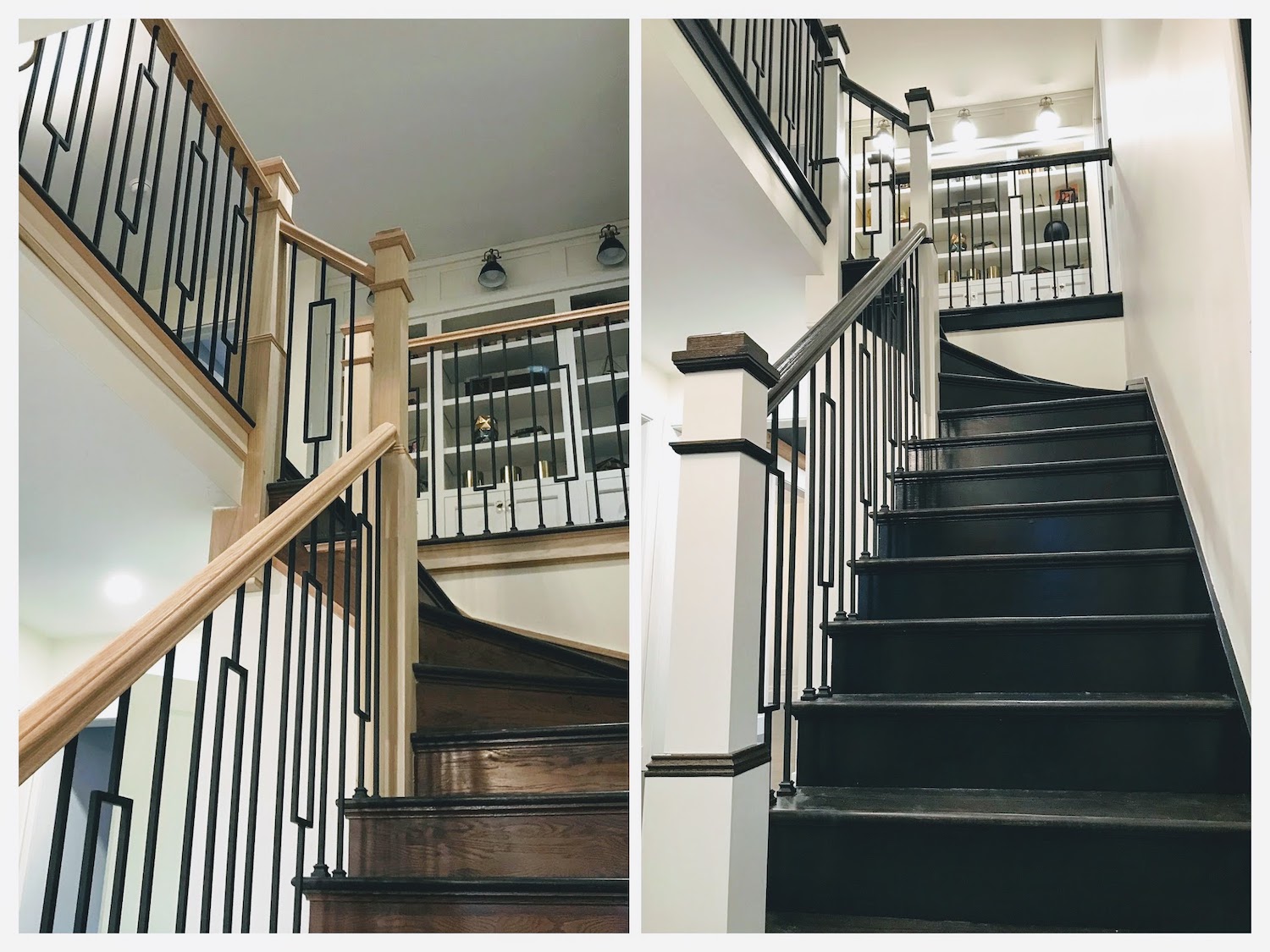Over time, your home’s stairway may begin to show wear and tear, and by refinishing, this could add a dramatic element to your home. With a little work and patience, rejuvenating your stairway, banister, railings, and treads with either a fresh coat of paint or stain could be an easy do-it-yourself project if you know the techniques for a lasting finish.
Sanding
The first step to refinishing is to remove the old paint or finish by stripping it. Removing the old finish will allow the paint or stain to properly adhere to the wood. The stripping is done by either sanding or by using a wood finish remover, sometimes a combination of both is needed.
You will sand until the finish is dull and no longer shiny for painting. If staining, you will sand until the previous stain color is gone, and only the raw wood color remains.
Using an electric sander to remove the old finish on large areas is helpful, and use a sponge sander in smaller spaces. You will want to begin sanding from the top of the railing, then the sides. Push hard enough to form the sponge to the contoured shape. While using a piece of loose sandpaper for the Spindles, wrap this around the pole and scrub back and forth. Always sand with the grain of the wood and apply even pressure. Scrape away anything that the sander did not remove and use a wood finish stripper for any remaining areas.
It’s imperative to clean the wood thoroughly after sanding. You could vacuum using a brush attachment and then use a damp rag or a tack cloth to remove any remaining fine dust. Wiping down this area will ensure that no dust particles are left behind that could get under the paint or stain and cause a grainy surface.
Painting
Painting is an option that enhances the appearance and the durability of your Staircase. Before you paint, you will want to prime the wood with a high-quality Oil Based Primer. Take precautions when using Primer by adequately protecting yourself.
When you are ready to begin painting, you will want to use an angled bristle brush and apply just a thin coat of paint, starting with the underside of the Handrail, then move to the top. Next, you will want to paint the Spindles by using vertical strokes on square Spindles and horizontal strokes for round Spindles. Allow this coat of paint to dry for at least 24 hours.
Move onto to lightly sanding the wood with a superfine grit paper so that you carefully sand out any paint drips. When completed with the sanding, wipe down thoroughly using a damp rag and allow the surface to dry. Repeat this process up to three times.
Staining
For either old or damaged wood you may need a penetrating finish to increase wood strength and add protection. A glossy lookis achieved by using a surface finish. You will select the appropriate finish for your wood and then begin by applying a penetrating finish with a lint-free cloth or nylon. Apply in a circular motion until the wood can no longer absorb anything further. Wipe off excess and allow the surface to dry completely, repeat until the you have desired look is achieved.
When using a surface finish, stain the Stair Railing by applying a thin layer with a high-quality brush. After it has dried, you will want to sand with fine sandpaper and wipe with a tack rag and apply additional coats. It is vital to smooth any bubbles or drips immediately.
For an added enhancement, you may want to use a Polyurethane product to either your painted or stained project. By doing so, it will help to protect the wood, prevent peeling or cracking, and allow easy cleaning.






